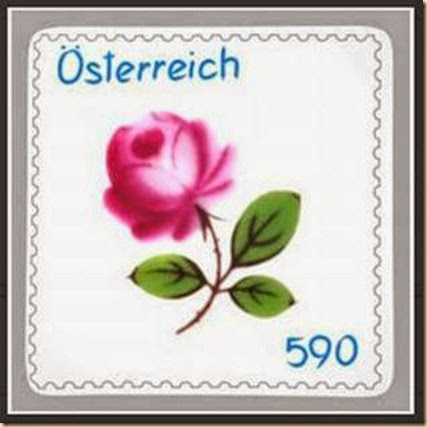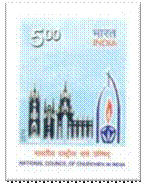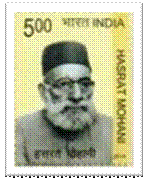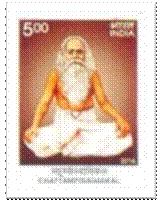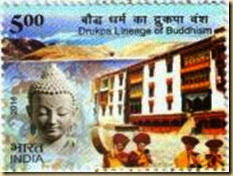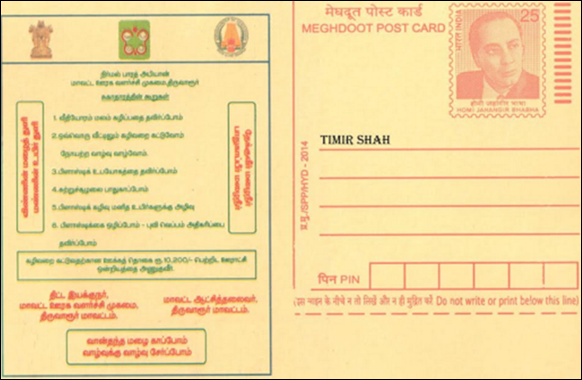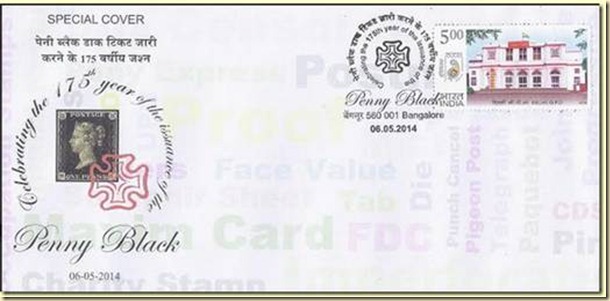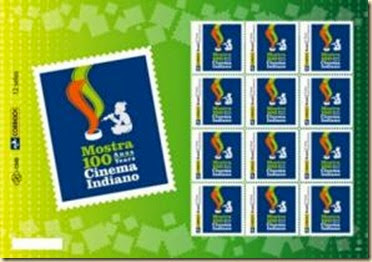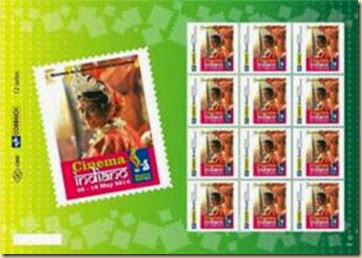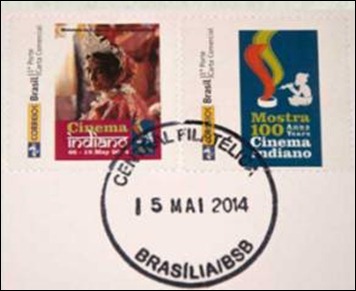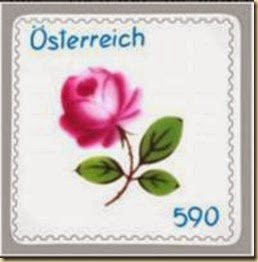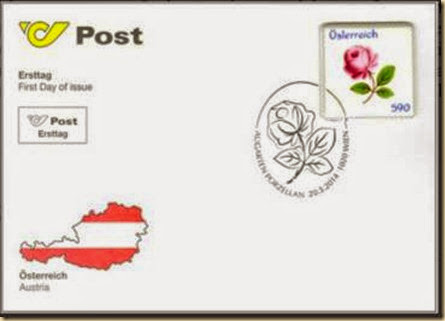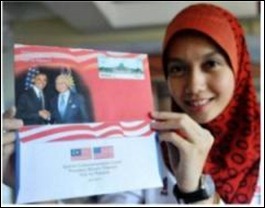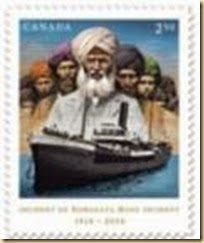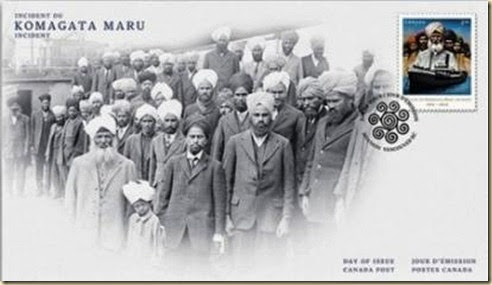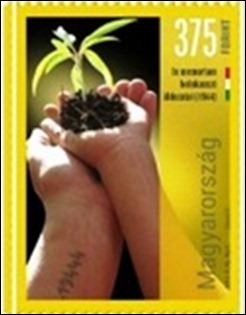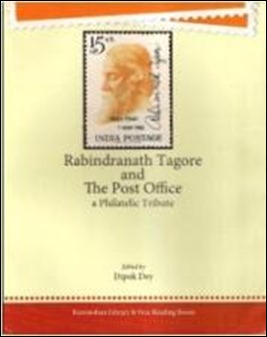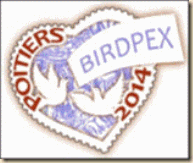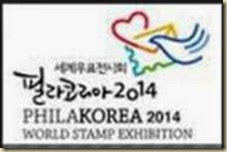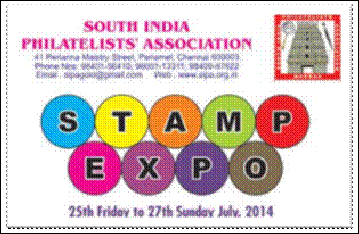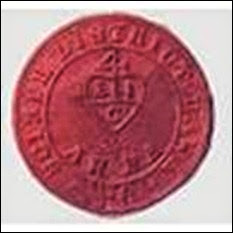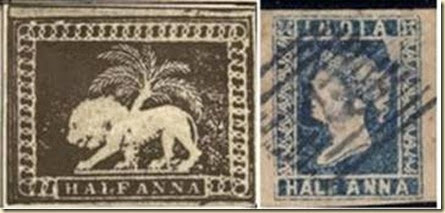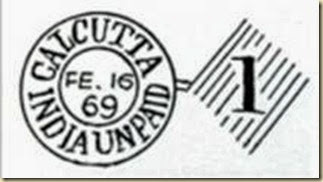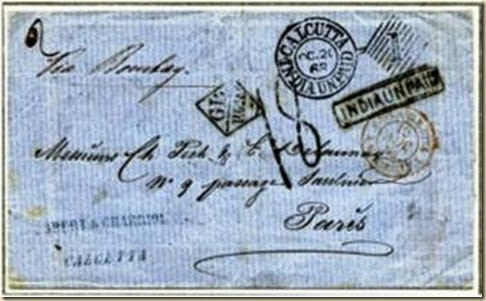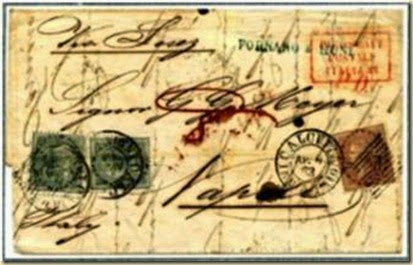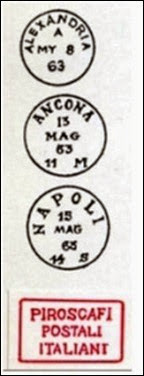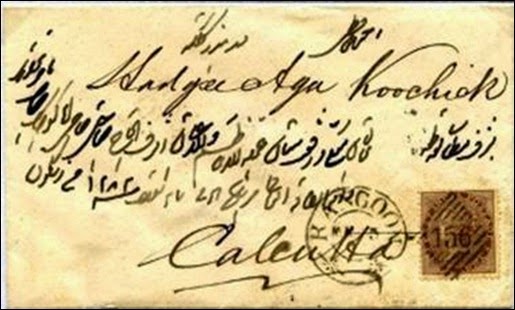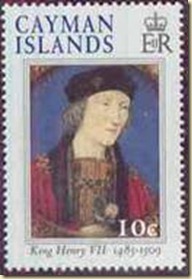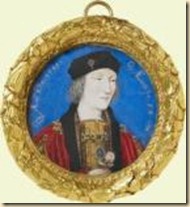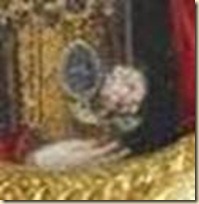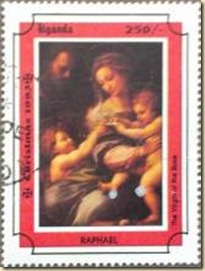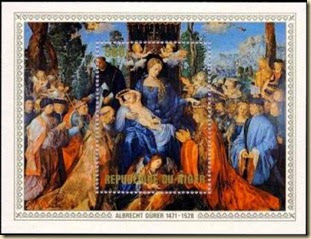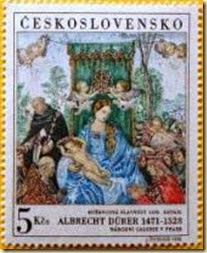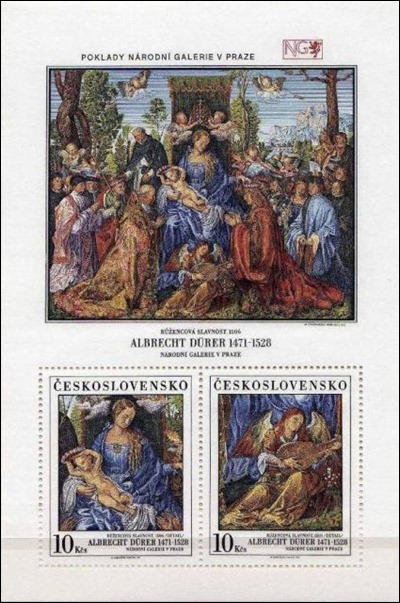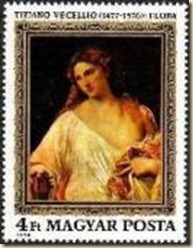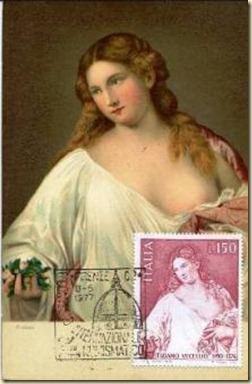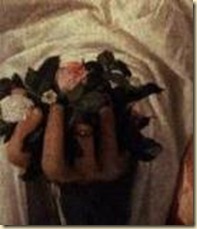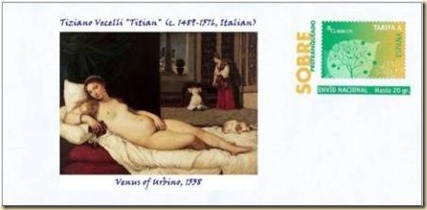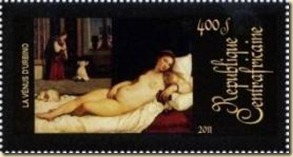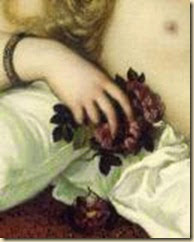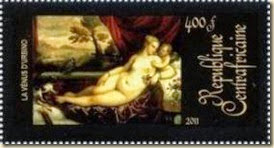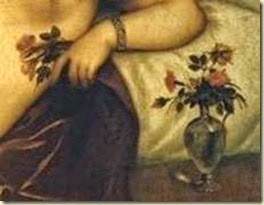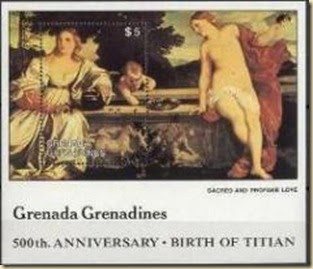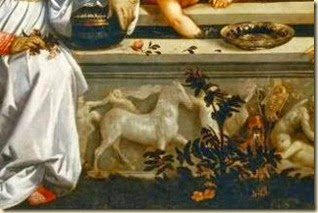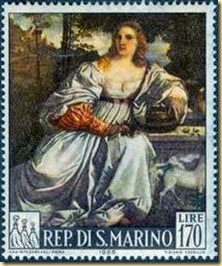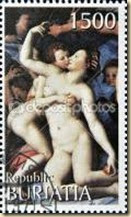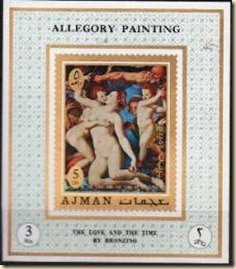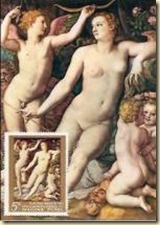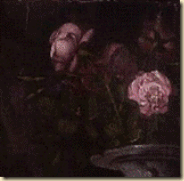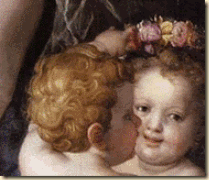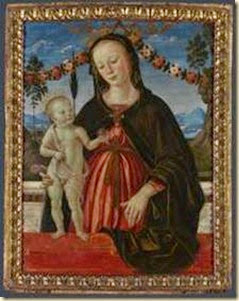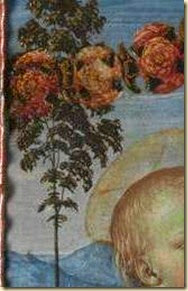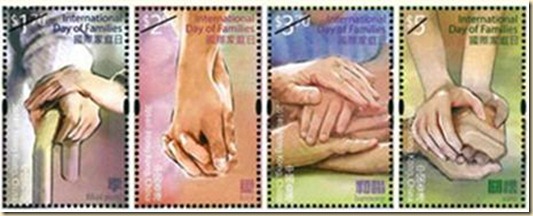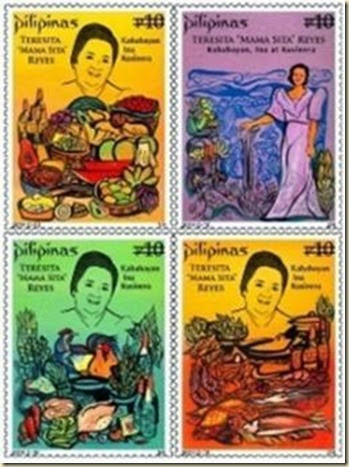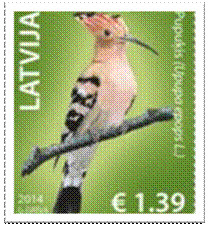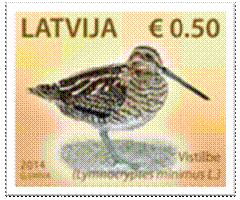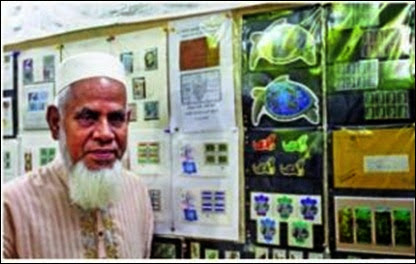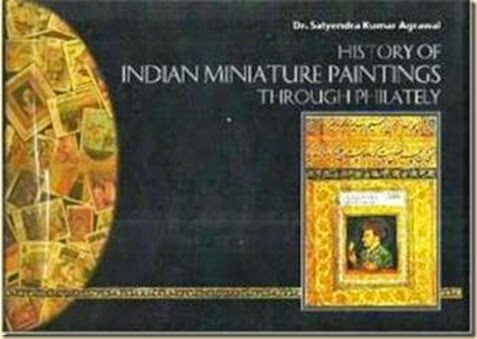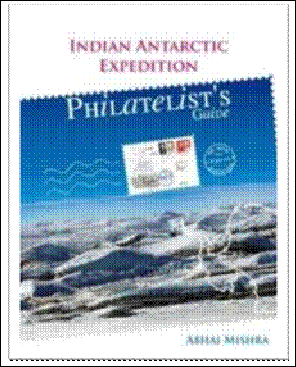Date of Issue : 20 March 2014
Augarten Porcelain, "Viennese Rose", the world's first stamp made of genuine porcelain issued by Austria Post . This innovative stamp is from Austria Post’s "Classic Brands" series . Read more about this stamp in this issue !!
Dehradun June 2014 Vol. VII Issue # 78
Monthly e-Stamp Bulletin Edited by Jeevan Jyoti for free circulation among philatelists
Readers are requested to send reports of philatelic activities in their area for publication. Short write ups by the readers about their journals, societies, publications and philatelic requirements can be sent for inclusion in this bulletin to j.jyoti9@gmail.com and by post to –
Ms. Jeevan Jyoti, c / o Mr. Ajay Srivastav, Wildlife Institute of India, Post Box No. 18 Chandrabani, Dehradun – 248001. India
Note- This bulletin is only for circulation among a limited group of philatelists without any commercial purpose. The bulletin will be sent to the readers only on request. Those who wish to receive it regularly please reply giving the name of your city / country with the subject SUBSCRIBE RAINBOW
Dear Reader,
I am pleased to release June 2014 issue of Rainbow Stamp News. Cancellations and Postmarks always attract philatelists as these items have special significance in their collection. Pictorial cancellations are Collectors’ delight. Once again I want to raise the issue of ‘cancellations and postmarks’ given by India Post. The quality of cancellations issued by India Post has not yet improved despite many complaints by the philatelists. The stamps on letters are damaged poorly by heavy oily cancellation and pen markings, This trend needs to be changed. The quality of First Day Postmark, special postmark and regular cancellation on mail should be fine as given by other postal administrations of the world.
Please send your feedback about this issue. Your feedback will help me to bring out each and every issue special for you. This is all for this month….More in next issue…...
Happy Collecting !
-- Jeevan Jyoti
Contents
· From the Desk of Naresh Agarwal
· Recent Indian Issues
· In The News
· Beginners’ Section
· Specialized Section
· New Issues from Other Countries
· The Lighter Side
· Philatelic Clubs and Society
· Blogs & Websites on Philately
· Editor’s Mail Box
· Promotional Section
· Current Philatelic Magazines – Newsletter
 From the Desk of Naresh Agarwal
From the Desk of Naresh Agarwal
Treasure hunt though our own Treasure House
Stamp collection is primarily accumulation of stamps and other related collectable material which matured philatelists do. Even after so much of talks about methods of stocking of stamps etc., regularly, we still stick to the traditional ways by keeping the stamp in stock books & covers and other material in stock boxes unarranged. Most of us have the habit of putting the material in stock books or boxes and forget. We hardly check those on regular basis. Rather sometimes we just forget what exactly lies in our stock books/boxes. I myself have good number of stock books and boxes which I think I might not have checked for long time. Not even opened those. And further, I truly don’t remember what lies in those boxes/books. And I admit this not a healthy practice. A few days back in face book I read the post by one philatelist Mr. Anup Kumar Raut from Orissa. His post read as under :
“ I occupied myself in the last Second Saturday & Sunday in sorting out my ROMANIA stamps. The total no. of loose stamps-Mint/used/CTOs came out to be 860 including Personality-48, Animals-86, Birds-54, Sports & Games-119, Flowers-68, Paintings-121, Others-191 & Definitives-173 housed in 3 stock books. Of course this excludes my Olympics & other exhibits and Cover collection. Really fabulous and enjoyable. I sincerely feel that we should organize our collections and enjoy by touring sometimes through our albums.”
Before I say anything, I would like you all to read my comment on that which reads as under :
“Journey through your the old stock books or sometimes old stock boxes helps you to find the treasure you never knew you had. It gives treasure and pleasure both. True.,.it helps to reorganize collection, the junk material, and the forgotten stuffs of course add to the new thinking and the pleasure. We must agree that those who are in regular touch with philately....involved in philatelic learning....eager to accumulate scattered philatelic knowledge; do sometimes find jewels in their own junk stock books and boxes. Well informed Mr. Raut...Your post has now helped me to think seriously to check my own books and boxes ...to help me become rich to help in improving my collection/ exhibit, to help me to help others associated with me, if I find something worth sharing/exchanging or delivering. A sound message for philatelic fraternity given by you... Thanks again”
The above post and my above comment clearly states my intention and opinion which I want to put before you. Philatelic learning, introduction of new classes and expansion of themes, appreciation of new variety in philatelic material in collecting and exhibiting has now made each and every philatelic stuff important. No one knows which of the ignored or forgotten items today will become most important one day. So this needs a regular look in to whatever we possess. This is time that we develop a habit of periodic but regular checking, viewing and thinking of all the material lying in closed boxes/books. This regular check will also help in preservation of the material too.
I would further like to add that we all know that we procure, buy and possess philatelic material pertaining to not only the themes / subjects we pursue but also pertaining to some associated subjects or even some other subjects which we just keep and forget. Apart from these we collect and dump in stock boxes/books whatever material in form of stamps, covers, fiscal etc come in our way of procurement. For example, most of us must have some fiscal material which we don’t even think of looking at. But let’s change our attitude. Let’s look at those. Let’s look around what is happening in philatelic field. Fiscal are now being highly appreciated in this field. Of late, in the reputed magazine” INDIA POST” from India Study Circle, I could read two articles on fiscals such as “Hundies of Bikaner State” and “Radio/T.V. License fee stamps”. One article on “Publicity and Charity labels” also caught my attention. Apart from these, there can be numerous finds in our own stock books and boxes which can help us to start or develop new themes or help us to help others to improve their collections/exhibits.
I have observed many a times that we keep on searching the material outside which we actually have in our stock books lying unorganized and not known to / remained unnoticed by us because of the above fact that we hardly open our books/boxes. It is important that we develop some such methods and inculcate such habits that we have regular access to whatever we possess. Looking in to the spread of philatelic field and knowledge, each and every items has now become important. So moving through our own rusted stock books and boxes certainly helps us in many ways apart from the fact that it adds to our joy. Hence, we should make a habit of hunting through our own treasury to find hidden / unnoticed treasure.
- Naresh Agarwal : email : nareshkumar1992@yahoo.co.in
Recent Indian Issues
· 11 February 2014 : Central Vigilance Commission – Rs 5
· 25 February 2014 : Hasrat Mohani – Rs 5
· 25 April 2014 : National Council of Churches in India - Rs 5
· 30 April 2014 : 50 years of Govind Ballabh Pant Hospital, Delhi – Rs 5
· 30 April 2014 : Chattampi swamikal – Rs 5
· 14 May 2014 : Drukpa Lineage – Rs 5
New Postal Stationery
India Post issued a new Meghdoot Post card. This is the first Meghdoot card of the year 2014 .
Recent Special Covers
19th March 2014 : Golden Jubilee Celebrations of Shree Rushabdevji Jain Temple, Chembur, Mumbai
28 March 2014 : Golden Jubilee Celebrations of Carmel College, Nuvem, Goa
10 April 2014 : World Homeopathy Day, Vadodara
19 April 2014 : Mahavir Jayanti , Mumbai
19 April 2014 : Adopt a homeless pet, Mumbai
21 April 2014 : 150 Glorious Years of Western Railway , Mumbai
23 April : 450th Birth Anniversary of William Shakespeare, Mangalore
1 May 2014 : Golden Jubilee of Pt Ravishankar Shukla University,Raipur
6 May 2014 : 175th Anniversary of Penny Black, Mumbai
12 May 2014 : Anjanshalaka Pratistha Samaroh of Kalyanak Bhumi Jin Prasad of 10th
Jain Tirthankar Shri Sheetalnath Swami at Shri Sheetalnath Jin Prasad, Village Bhondal, P. O. Hunterganj, Distt. Chatra (Jharkhand).
In The News
Brazil issues stamps to honour Indian Cinema
Brazil issues stamps to honour Indian Cinema. Brazil has paid tribute to the Indian film industry on its centenary by releasing two postage stamps designed by an Indian graphic designer at a commemorative festival held in Brazil. The $2 billion (Rs.120 billion) Indian cinema completed 100 years in 2013. Made by Kochi-based graphic designer Satya Raj, the stamps were jointly released by Indian Ambassador Ashok Tomar and curators and directors of the festival - Anand Jyothi and Carina Bini Palackapilly - when the festival officially opened in the capital city of Brasilia early this month, said a statement. Cultural director of the Brazilian Postal Service Romulo Salvino, and cultural secretary Sueli Navaho and Brazilian and Indian officials attended the ceremony.
Jyothi said the first ever edition of the festival marking 100 years of Indian cinema to be held in South America will later move to important Brazilian cities such as Rio De Janeiro, Reife (northern Brazil) and Porte Alegre (southern Brazil) after the World Cup - June 12-July 13. The festival, with focus on parallel art movies, is organised by Tantri Arte, a production house run by film curator couple Jyothi, a Malayali and his Brazilian wife Carina Bini, in collaboration with Brazilian cultural ministry.
The couple has been working as a cultural link between Brazil and India for over 15 years, and the film festival was one of their major initiatives that received recognition of both the governments. Jyothi said the films were being well received by the Brazilian cinema connoisseurs and critics with Adoor Gopala krishnan's award-winning "Katha Purushan" winning special accolades.
The couple organised the Indian film festivals in five Brazilian cities during 2011 and 2012. For their 2012 efforts, which saw the screening of 35 Indian films during a month, they won official recognition as the Best Foreign Film Festival. The fest was curated to bring together top contemporary Indian cinema in different languages made by such maestros as Adoor, Girish Kasravalli, Shyam Benegal, and Anand Gandhi among others, Jyothi said.
Note : These stamps are not regular postage stamps but customized stamps. It should be noted that these customized stamps are not like normal customized /personalized stamps which are usually in pair (regular stamp with a label).
Austria issues genuine Porcelain stamp
On 20th March 2014, Austria Post issued a stamp of genuine porcelain .For the production of a stamp made of porcelain both its own process as well as a special tool needed to be developed , because only then the production of the relatively large number of stamps could be produced in the given time. Since the usual moulds of plaster only about thirty times can be used , the stamps were not made by casting with casting material , but with a more solid form (" rotational mass " or " press material " ) is used . Subsequently, the sheets were baked in the porcelain so-called first firing at 960 degrees Celsius for 24 hours , then glazed and again cured at even higher temperature . In the Austrian porcelain manufactury , the pieces are always painted by hand. That would not have been possible in this case because of the large number (150000 nos.) and the lack of time . Therefore, the most expensive and highest quality printing method was used: the screen printing. To ensure color fastness and contrast this special stamp made of porcelain, the colors were eventually "burned " at 820 degrees Celsius.
: Leeza Padhi - Cuttack
Philatelists celebrated victory of Narendra Modi
Shri Narendra Modi was sworn in as 15th Prime Minister of India on 26th May 2014. On this occasion philatelists celebrated this day in their own way . Innovative philatelic items were prepared and produced by the Philatelic fraternity to pay tribute to Shri Narendra Modi. Some prepared private special covers . Mr Pradip Jain got issued My stamp on Narendra Modi.
Special Cover on Barack Obama by Pos Malaysia
Pos Malaysia Berhad (Pos Malaysia) welcomed President Barack Obama by issuing a special commemorative cover to honor the President’s first visit to Malaysia since assuming office in 2008. President Obama has been the first president of the United States of America to visit Malaysia in nearly half a century after President Lyndon Johnson’s visit in 1966.
Canada Post commemorates 100th-year anniversary of the Komagata Maru
Canada Post marks the centennial of the 1914 Komagata Maru incident with a $2.50 international-rate stamp issued May 1 in a booklet of six. On May 23, 1914, the Japanese freighter Komagata Maru arrived in the harbor of Vancouver, British Columbia, with 376 passengers from India on board — 340 Shiks, 24 Muslims and 12 Hindus — seeking to immigrate to Canada. Before the incident ended almost five months later, only 20 were allowed to enter Canada, and another 19 were killed upon their return to India. Designer Mark Summers created the artwork for the stamp. The Komagata Maru stamp was printed by Canadian Bank Note by five-color offset lithography on Tullis Russell paper, with general tagging on all four sides. The booklet stamps have serpentine die cuts on all four sides. The printing quantity for the issue is 1.5 million booklet stamps.
The most beautiful stamp of Greenland ….
The 2013 Greenlandic stamp of the year was the stamp with the attractive polar bear with the title “Vulnerable Animals”. Stamp collectors from all over the world voted for their favorite among the 24 stamps issued by TELE-POST in 2013.
It is the artist Naja Abelsen, who has created the beautiful stamp. Naja has earlier been behind no less than 16 stamps issued by TELE-POST. The stamp “Vulnerable Animals” was issued 11th June 2013. It was a joint issue with the Israeli Post and the point of the issue was to create awareness about vulnerable animals.
The stamp is enhanced with the Augmented Reality technology. This means that you can see a short video of a live polar bear, if you download the “Sepac App” and install it on your tablet or smartphone and scan the stamp.
The winner of this monetary prize of DKK 10,000 chosen in the draw was Philippe Kocielkowski from Saint-George-sur-Meuse in Belgium.
The ten lucky winners of the extra prices of a year pack from 2013 are Esa Kallio in Sweden, Gert Kragh Andreasen, Camilla Nissen Toftdal, Jørgen Rasmussen and Jørgen Vesth-Hansen in Denmark, Bezazel Ferhat in Algeria, Pastorimi Massimo and Francesco Magnani in Italy, Tor Nygaard in Norway and finally Uda Yanuhardi in Indonesia.
The competition for the “2013 Greenlandic stamp of the year” ran in the period from 1st December 2013 to the 1st March 2014.
One of the most tragic event as commemorated on Hungarian stamp
Magyar Posta issued a commemorative stamp in remembrance of the victims of the Holocaust. The design of the stamp remembers the victims and symbolically conveys the message of renewal and rebirth. The stamp was designed by the graphic artist Eszter Domé and produced by the ANY Security Printing Company.
Between 1941 and 1945 more than 400,000 Hungarians fell victim to the labour camps, deportation, brutality, the death marches, mass execution and the concentration camps. Every tenth victim of the Holocaust and every third victim of Auschwitz-Birkenau, the largest National Socialist extermination camp, was Hungarian.
On 28 April 1944 Prime Minister’s Decree no. 1610/1944 on the regulation of certain matters concerning the dwellings of the Jews and the designation of the residence of the Jews, the “Ghetto Decree”, was issued. On the same day, as the first step of the mass deportation that was to begin in mid May, the first death train carrying over 1,800 people left Kistarcsa near Budapest for Auschwitz. Between the middle of April and the end of May almost the entire Jewish population of Hungary was confined to the ghettos and collection camps, and in the largest deportation exercise of the Holocaust approximately 430,000 people were transported between 15 May and 9 July 1944.
Book on Tagore stamps and covers
Rabindranath Tagore and The Post Office - A Philatelic Tribute
Here is a new beautiful book “ Rabindranath Tagore and The Post Office - A Philatelic Tribute “ edited by noted artist and philatelist Shri Dipok Dey. The book has been published by Rammohun Library and Free Reading Room, Kolkata. Rabindranath Tagore was the first Asian to win Nobel Prize in Literature. He has been honoured by various countries on postage stamps. This book gives details with colorful illustrations of all the stamps along with First Day Covers, Postmarks, Souvenir sheets, Miniature sheets, special covers, special postmarks, Booklets, Maximum Cards, Picture Post cards , catch Covers etc. The cover design and layout of the book by Shri Babul Dey is excellent. It is a complete book of philatelic items issued on Gurudev Rabindranath Tagore. This book will be liked by all Tagore lovers as well philatelists.
The first chapter gives “Rabindranath Tagore : A Chronicle : 1861 – 1941 “
The next chapters give details of stamps issued by different countries in alphabetical order. With the details of stamps other description about Tagore’s visit or his special association with the country is also given .
After the chapters of stamps, details of covers, postcards, booklets and Picture Postcards are given. The book is hard bound and the quality of paper and printing is very fine. This nice book will add colors to the collection of philatelists and general readers would highly appreciate this book.
The other details of the book are given below :
Rabindranath Tagore and The Post Office - A Philatelic Tribute Edited by Dipok Dey - Hardbound - Pages 64 - Price Rs 575. - Published by Rammohun Library and Free Reading Room, 267 Acharya Prafulla Chandra Road, Kolkata – 700009. email : rammohunlibraryafrr@gmail.com Ph. 033 – 700009 ( Please contact from 2PM to 6PM except Saturday and Sunday)
 Dipok Dey is a renowned artist and philatelist from Kolkata. He has designed several Indian stamps, special covers and greeting cards issued by India Post. He has written several philatelic articles and edited philatelic books. He is the first Indian to design UN Stamp in 1985. His specialized exhibit on Cinema and printing Technology has been exhibited in many National and International Philatelic Exhibitions.
Dipok Dey is a renowned artist and philatelist from Kolkata. He has designed several Indian stamps, special covers and greeting cards issued by India Post. He has written several philatelic articles and edited philatelic books. He is the first Indian to design UN Stamp in 1985. His specialized exhibit on Cinema and printing Technology has been exhibited in many National and International Philatelic Exhibitions.
Philatelic Exhibitions
MALAYSIA 2014 - 29th Asian International Stamp Exhibition and World Youth Malaysia 2014
MALAYSIA 2014, the 29th Asian International Stamp Exhibition and World Youth Malaysia 2014 will be held from 1 to 6 December 2014 at the Kuala Lumpur Convention Center. Prof. Sahadeva Sahoo is the Commissioner from India for this exhibition.
Official Website : http://malaysia2014.com.my/
Details of the exhibitions are available at following link :
http://rainbowstampclub.blogspot.in/2014/01/malaysia-2014-29th-asian-international.html
For more info please contact :
Prof. Sahadeva Sahoo
'Saswat', D-3, B. J. B. Nagar,Bhubaneswar 751014
Phone +91674 2432251 Mobile +91 9337103542
email : sahadevas@yahoo.com
BIRDPEX 2014 – International stamp exhibition on Birds
BIRDPEX 2014 was held in Poitiers, France from 1- 4 May 2014.It was a special philatelic exhibition on Birds. Philatelists from all over the world participated in this exhibition. Some Indian exhibits were also displayed at this show.
BIRDPEX is an international philatelic exhibition on "birds" that takes place every four years. After Christchurch (New Zealand , 1990), Rosenheim (Germany, 1994), London (United Kingdom, 1998), Leek (the Netherlands, 2002), Nørresundby (Denmark, 2006) and Antwerp (Belgium, 2010), the 7th edition took place in Poitiers (France).
View : Glimpses of BIRDPEX 2014
Result of BIRDPEX 2014 is available at following link :
http://www.mg-o.de/mgobirdpex2014-2.htm
PHILAKOREA 2014 - World Stamp Exhibition will be held in COEX Hall A, Seoul from 7-12 August 2014.
Website : http://www.philakorea.com/
Mr Surendra A. Kotadia is the National Commissioner for India. He may be contacted at following address.
SURENDRA A. KOTADIA
DIMPLE DRUMS & BARRELS PVT LTD , 1119 MAKER CHAMBER – V
221 JAMANALAL BAJAJ ROAD , NARIMAN POINT ,MUMBAI 400 021 INDIA
TELEPHONE + 91 22 22024130/31 MOBILE + 91 98199 03789 FAX + 91 22 22843275 E-MAIL - surendrakotadia@gmail.com
Stamp Expo at Chennai
South India Philatelists' Association is conducting Stamp Expo from 25th to 27th July 2014 . The Stamp Expo will showcase the culture, history, heritage, flora & fauna displayed by postage stamps. There will be limited number of 60 stamp Dealer Stalls from all over India. For more details contact email : sipagold@gmail.com Ph . 9840156410, 9600113311.
HP State level philatelic Exhibition
The first Himachal Pradesh State level philatelic exhibition will be held in Shimla from 9-11 June 2014 at Gaiety Theatre, Shimla.
Beginners’ Section
Philately History of Philately in India
The Indian Philatelic history began with the introduction of paper postage in India in 1852. Before that copper tokens were introduced for payment of postage in 1774. Their use was, however, not found to be very convenient and need was felt for some other token of pre-payment. With the success of Penny Postage in England, Sir Bartel Frere, the Commissioner of Sind introduced paper stamps for his province in 1852.
These stamps, known as Scinde Dawk, were round in shape and were issued in three variations – embossed on white paper without colour, on white paper in blue and on vermilion wafers. They were withdrawn in October, 1854 on the introduction of the regular India Postage Stamps though their use continued for quite some time.
In 1854, it was decided to issue stamps for the British India and in the interest of the economy, to have them printed them in India. The first design for the India Postage stamps was attempted by Col. Forbes of Calcutta Mint showing the 'Lion and the Palm tree'. It was a bold and imaginative design but somehow it could never be used. The next stamps to be designed and printed in 1854, by the Surveyor General's Office were blue lithographed half anna stamps showing a youthful profile of Queen Victoria.
While the first India Postage Stamps issued in 1854 bore the inscription 'India Postage', the inscription was changed in the same year to 'East India Postage'. This was changed from 1882 to 'India Postage' and continued till 1962. From November, 1962, a new caption 'भारत' 'INDIA' was introduced replacing the 'India Postage', though three stamps issued in December, 1962/January 1963 carried the earlier inscription.
From the beginning of British Imperialist Rule when the Queen Victoria stamps were issued in 1854, a portrait of British Monarch had figured in Indian Stamp Designs. This came to an end with India gaining independence on 15th August, 1947. The first independence stamps, issued in 1947, were three in number. They depicted the Ashoka Pillar, (National Emblem of India) the Indian National Flag and an Aircraft. Since then India has issued more than 3000 Stamps.
Source : India Post
Specialized Section
Some Remarkable Cancellations and Postmarks – 20
Bengal Circle Cancellations (Renouf Type 10)
This type is a duplex cancellation. The left half consists of two concentric circles of diameters 23 and 12 mm, containing name of the Post Office and “INDIA PAID” or “UNPAID” at the base, date in the centre of the inner circle. The right half is a square placed obliquely to the left duplex with ten parallel rising from left to right, framing a number. Duration of use 1862-1872.
Cover from Calcutta to Paris
1863 Stampless EL from Calcutta to Paris, via Bombay, with boxed “INDIA UNPAID” and Calcutta and “CALCUTTA INDIA UNPAID: OC.20/68”, double circle red French Packet Board Stamp “POSS.ANG.V.SUEZ/A.MARSEILLES/10NOV.63”FrenchAccountancy Mark “GB.1F62 4/10C”indicating amount credited by France to Great Britain. “18” (Decimes) in manuscript
Cover from Calcutta to Naples (Italy).
1863 Folded letter from Calcutta to Naples (Italy) via Suez, bearing 1xOne Anna & 2x4As Adhesives obliterated by “CALCUTTA:INDIA PAID/AP 8/63=1” duplex applied to Foreign Mail despatch from Calcutta. B/S “ALEXANDRIA/8.5.63” + “ANCONA/13.5.63”+ “NAPOLI/15.5.63” and Italian Board Stamp “PIROSCAFI/ POSTALI/ ITALIANI” Postage Paid:9 Annas for letter not exceeding ½ Ounce to Italy via Alexandria &Ancona as per January 1863
Renouf writes in his Chapter, “Early Indian Cancellations,1855-1884”:“The Burma Circle was formed in 1861 but it adhered to its Type 7 numbers until 1873 and follows Bengal in regard to Type 10”. So the following cancellation originating from Rangoon Cantonment Receiving House shows Renouf Type 10, although differs from the originalRenouf Type 10, in that it has two fleurons at the base in the left half of the cancellation. Jal Cooper mentions in his “Early Indian Cancellations” that the cancellations used in Bengal and Burma as this TypeN0.10 used during 1863 to 1873, the cancellations from Burma being scare. The following cover sent from Rangoon to Calcutta serves for the comparison with the first cover as reproduced at the beginning of this type.
- Dr. Avinash B. Jagtap : email : abjagtap@hotmail.com
Rose Paintings on Stamps (Pt 2)
© Dr.Satyendra Kumar Agrawal
In 1461, the rose became a symbol of the British royalty and subsequent paintings of the Queens and Kings often showed them holding roses, or with their royal “rose” emblem. Portrait of Henry VII (1457-1509) holding a rose in hand which symbolizes the end of “ War of Roses” is depicted on an issue of Cayman Is. 1978.
Portrait of Henry VII holding a Tudor rose in hand
The first quarter of the 16th century is generally termed as the “High Renaissance”. It is the period when the leading artists had sufficient technical expertise to achieve virtually any naturalistic effect they wished, coupled with a controlling classically-based intelligence which imposed visual harmony and compositional balance while eliminating gratuitous detail.
One of the signature Florentine artists of High Renaissance period was Raphael, whose paintings achieved new standards of depth and harmony. This is clearly seen in his portrays of the Madonna.
“Madonna de la Rosa” or “The Virgin of the Rose” is an oil painting made circa 1518 to 1520, now in the Museo del Prado in Madrid, which is believed to be one of the many Madonnas made by the Italian artist, Raphael. The painting shows the Virgin carrying the child Jesus and Saint Joseph, another child who is possibly John the Baptist, and a rose on the table from which the artwork got its title.
However, art critics have doubted that this is an artwork made by the artist only. It was said that the dynamic bending of the Virgin’s head as well as the body, together with the playful movement of the infant Jesus is not commonly seen in his works. The use of pastel colourssuch as pink, olive green and turquoise was also something different from previous works by Raphael.
It is also believed that the rose in this painting and the entire lower portion, was added at a later date by an unknown artist.
“The Virgin of the Rose” is featured on Uganda 1993 and 4 values set released by Antigua & Barbuda in 1993. In this painting rose is used as adornment.
“The Virgin of the Rose”, Rose lying on table top
Durer being the first northern artist fully assimilates the ideals of the Renaissance into his work. He is well known for his delicate watercolors of animals, plant life and symbolic use of roses in religious themes. “The Feast of the Rose Garlands”, c1506 is the work of art considered to be a milestone piece in the transition between the late 15th century Gothic/Medievalism and the start of the 16th century Renaissance. It is a traditional picture of the Madonna and Child showing the rite of the rosary. Garlands of red roses represent our Fathers of the rosary and the Sorrowful Mysteries of the Passion. White roses symbolize the Hail Mary’s and the joyful Mysteries of the Virgin. This painting is full of symbolic detail but in essence it represents the idea of a universal brotherhood of Christianity. This painting is also unique in the sense that before that it was believed that only Virgin Mary was capable of bestowing roses upon her earthly subjects, but in this, Durer painted Maimilian and the Pope offering garlands of roses to the Virgin Mary.
This painting is featured on number of issues of different countries e.g. Niue 1987, Niger 1978, Hong Kong 1991, Aitutaki 1986, Grenada 1991, Sierra Leone 1991 etc. but best is on a S/S of Czechoslovakia 1989 and a detail on 1968.
“The Feast of the Rose Garlands”
“The Feast of the Rose Garlands”, Rose crown
“The Feast of the Rose Garlands”
Titian was the greatest painter of the Venetian School and one of the most influential artists of all time. He used colour and lighting effects to produce unity and harmony in his pictures. His ability to convey a sense of life and vigor is another characteristic of his paintings. He used always bunch of roses in the hand of women in paintings to symbolize her beauty.
“Flora”, is a good example of it. It is an oil painting dated to around 1515 and now held at the Uffizi Gallery in Florence. The work was reproduced in numerous 16th century etchings.
It portrays an idealized beautiful woman, a model established in the Venetian school by Titian's master Giorgione with his Laura. Her left hand holds a pink-shaded mantle, while another holds a handful of White and Pink rose flowers with leaves, symbolic of purity and beauty.
Dark background in "Flora" gives this painting a Classical ambiance of earlier periods and the plain background allows the viewer to focus more intensely on the woman who is the center of the painting. This painting has soft, sensual tones which made many think that the sitter was a contemporary Venetian courtesan. Some believed to be Titian's mistress Cecilia, whom he finally married in 1525 to legitimise their children. However, the flowers in her right hand indicate that she is the ancient goddess Flora.
Titian's paintings of women are personal in another way. The same models recur in many of his pictures. The woman who posed as Flora, Titian's most iconic beauty, is also in his painting Sacred and Profane Love.
“Flora” is also depicted on many postal issues, Senegal 1977, Bulgaria 1986, Italy 1977, and Hungary 1976 etc.
“Flora”, Pink and White Rose flowers and leaves
“Venus of Urbino” is another masterpiece by Titian completed in 1538, for the Duke of Urbino Guidobaldo II Della Rovere, also includes bunch of roses to symbolize beauty.
It was a gift from the Duke to his young wife. The painting represents the allegory of marriage and was a “teaching” model to Giulia Varano, the young wife of eroticism, fidelity and motherhood.
This painting is very interesting for its many hidden meanings. The evident eroticism of the painting, in fact, reminded the woman of the marital obligations she would have to fulfill to her husband. The erotic allegory is evident in the representation of Venus, the goddess of love, as a sensual and delectable woman staring at the viewer, who could not ignore her beauty. In her right hand she holds a posy of roses whilst she holds her other hand over her genitals. The light and warm color of her body is in contrast to the dark background, bringing out her eroticism.
The dog at the feet of the woman is the symbol of marital fidelity while, in the background, the house maid looking down at the young girl as she rummages in a chest symbolizes motherhood.
The strong sensuality of this painting was therefore consistent with its private, domestic purpose, as a gift from husband to wife.
With wise use of color and its contrasts, as well as the subtle meanings and allusions, Titian also achieves the goal of representing the perfect Renaissance woman who, just like Venus, becomes the symbol of love, beauty and fertility.
This painting can be seen on many issues on stamps as well as Postal Stationeries. Few are Bhutan 1989, Paraguay1979, Ajman 1979, Central Africa 2011 etc. and on a Postal envelope of Spain 2013.
“Venus of Urbino”
“Venus of Urbino” holding posy of Roses
Another Venus of Titian, “Venus and Cupid with a Partridge” is shown in an antique pose with her hand in a traditional position of modesty-but she goes quietly and seductively at the onlooker, in a spirit of shared intimacy with a bunch of roses in her hand. It is also most famous female nude and an inspiration for many later artists.
This painting can be found on an issue of Central Africa, 2011.
“Venus and Cupid with a Partridge”, Roses in hand and in flower pot
“The Sacred and Profane Love” depicted on San Marino 1966, Bhutan 1988 and Grenada Grenadine 1988, is an allegory of earthly and spiritual love showing the terrestrial and celestial Venuses. It was painted around 1514, when Titian was about 25 or 26 and is believed to have been commissioned by Niccolò Aurelio on the occasion of his marriage to Laura Bagarotto in 1514.
We see two women, in a landscape, slightly inclined toward each other on a sarcophagus. The bride dressed in white sitting beside Cupid is assisted by Venus in person. The figure with the vase of jewels symbolizes "fleeting happiness on earth" and the one bearing the burning flame of God's love symbolizes eternal happiness in heaven.
Leaning forward over this unusual sarcophagus/fountain from behind as it were and midway between the women, a winged infant with bowed head has the right forearm immersed in the fountain and is preoccupied in water play. The sarcophagus bears a strong resemblance to a capped spring as it is filled with water, however, a brass free-flowing spigot at the centre front pours this water onto a small flowering rose bush growing there.
“The Sacred and Profane Love”, Rose bush
Under right hand of the dressed woman are leaves and a flower torn (logically) from the small rosebush watered at the fountains front. Across the ledge of the fountain are strewn a flower, pieces of leaved branch, and single leaves which forms a visual trail between the plants, ending at the sprig of rosebush clasped under the gloved right hand in the woman’s lap.
“The Sacred and Profane Love”,rose bush clasped under the gloved right hand
Angnolo Bronzino’s “Venus, Cupid, Time& Folly”, also called “An Allegory of Venus and Cupid and A Triumph of Venus”, is an allegorical painting which also uses roses to symbolize love and pleasure.
This work was probably created in 1546 at the Tuscan court of Duke Cosimo de' Medici for presentation to the King of France. It was designed as a puzzle, and incorporates symbols and devices from the worlds of mythology and emblematic imagery.
Crowded into the claustrophobic foreground of the painting are several figures whose identities have been the subject of extensive scholarly debate. The themes of the painting appear to be lust, deceit, and jealousy.
Cupid, along with his mother (Venus) and the nude putto, to the right, are all posed in a typical Mannerist figura serpentinata form.
The undulating forms of Venus,the goddess of love and beauty and Cupid are rendered for their own sake rather than to serve narrative logic. Bald, bearded Time at the upper right, assisted by Truth at the upper left, draws aside a curtain to reveal the incestuous transgressions of Venus and the adolescent Cupid. Foolish Pleasure, the laughing child (Folly), throws rose petals at them, heedless of the thorn piercing his right foot.
The symbolic meaning of the central scene is thus revealed to be unchaste love, presided over by Pleasure and abetted by Deceit, and its painful consequences.
This famous painting appeared on many issues including Hungary 1968, Republic of Buryatia 1990 and Ajman 1970.
“Venus, Cupid, Time and Folly”, roses in hands of Putto
Another masterpiece by Angnolo Bronzino,“Venus, Cupid and Envy” is also an allegorical painting used beautifully roses to symbolize love and beauty. It is depicted on Hungary 1968.
“Venus, Cupid and Envy”, Roses in Flower pot and as rose crown
Life of Italian painter Fiorenzo de Lorenzo (1445-1522) is not very well documented. His one of the paintings “The Virgin and Child” c1515-25 appeared on a stamp of Italy 1978. In this gentle depiction of Virgin Mary and Child, Mary tenderly supports her son as he stands on a carpet in the foreground and wreath of roses are stung behind her. Red roses represented Christ and Mary’s suffering and whites her purity. The looping of the garland of roses in the painting may have been intended to reflect the rosary, the devotional beads which are often made of rose wood.
“The Virgin and Child”, hanging garland of roses
The work of the artists of the High renaissance had it seemed, achieved near perfection in the beauty and harmony of their paintings. It was thus left to painters on the latter part of the 16th century to achieve something more than just beauty.
-Dr Satyendra Kumar Agrawal : email : rosephila@hotmail.com
New Stamps from other countries
Hong Kong
15 May 2014 International Day of Families
The family is the mainstay of society. Since the 1980s, there has been growing attention placed on family issues. The United Nations proclaimed 1994 as the International Year of the Family, and has chosen 15 May of every year as the International Day of Families, with a view to promoting the awareness of issues relating to families within the international community. As this year marks the 20th anniversary of the International Year of the Family, Hong Kong Post issues a set of special stamps on the International Day of Families to advocate the importance of upholding family values. Using a hand motif and featuring different images of hands, this set of four stamps presents the core values of a family: filial piety, love, harmony and care.
1.70 ─Filial piety is a prime virtue and among the core values in family ethics. It can be manifested in the respect and care we show for our parents and elders. Depicting the hand of a younger person resting on the back of the hand of an aged family member, the stamp conveys the notion of filial piety.
$2.90 ─Love is what bonds the family. Mutual support, understanding, tolerance and acceptance among family members help to maintain harmonious family relations. The stamp shows two family members hand in hand, bonded by love.
$3.70 ─ Spending more time together helps to improve communication in a family and promotes harmony. The stamp portrays a blissful moment when family members put their hands together in a game.
$5 ─ Show your family members that you care for them. Take the initiative to ask how they are. Put yourself in their shoes and try to understand them. All of these can help to bring the family closer. The stamp illustrates a child holding the hand of a family member, expressing warmth and tender loving care. With its backdrop of a blue sky and a green lawn, the simple design of the souvenir sheet carries profound meanings. Four stamps are set within the house in the centre to imply that a happy, loving family can be built through filial piety, love, harmony and care.
Philippines
11 May 2014 : a culinary icon - Teresita “Mama Sita” Reyes
Philippine Postal Corporation issued stamps featuring Teresita “Mama Sita” Reyes. Teresita “Mama Sita” was born in Manila on May 11, 1917. She was the eldest daughter of the founder of Aristocrat Restaurant. Mama Sita grew up in a social milieu of Divisoria- Navotas and larger culture along Manila Bay. Being the eldest among 12 Siblings, expanded with orphaned cousins, Mama Sita took the chores of marketing and cooking with her mother. With Mama Sita’s children having grown-up, she regularly traveled to the far reaches of the world to learn and savor its various cuisines.
She concluded that indeed Filipino food can stand out among the best. Thus, arose Mama Sita’s vision of bringing the flavors of the Philippine Island to the World and fulfilled through Mama Sita’s mixes and sauces. The rest is history. Mama Sita Reyes is now a culinary icon, a simple Filipina, Kababayan, Ina at Kusinera.
Latvia
16 May 2014 Birds
Latvijas Pasts, released unique additions to Birds series of stamps featuring the hoopoe (Upupa epops), bird of 2014 in Latvia, and the jack snipe (Lymnocryptes minimus), which has never been depicted before in philatelic editions of the world.
The hoopoe, is the bird of the year in Latvia, is one of the most popular and frequently depicted birds on postage stamps. In turn, the jack snipe, which can rarely be observed because of its very private way of life, is to appear on a stamp for the first time in the world.
The Lighter Side
A World Record for a B’day Present!
How far would you go to surprise your mom on her birthday ? Arvind Kumar Pai has come up with an incredible answer to this query. He just got his mother’s name entered in the Limca Book of Records as a birthday present.
A post card that Arvind Kumar Pai sent from Kochi to his mother, Renjitha Bai, to wish her on her 55th birthday has entered the Limca Book of Records.
The post card has been recognised by the Limca Book of Records for using maximum number of stamps, a total of 322, on an envelope through the Speed Post Service.
“It all began with a thought to mark the 55th birthday of my mom, who stays in Alappuzha, with a special fete,” said Arvind. “My father passed away two years ago and my mom and sister are the only family I have. I thought about making her birthday special. I am not a member of any philately club but had a collection of stamps, including some rare ones. So I thought of putting them to good use,” Arvind Kumar said.
Arvind pasted the stamps on the envelope in a way that it read ‘Happy Birthday Amma.’ The envelope bearing the stamps worth `79, was sent through India Post, with the permission from Limca Book of World Records, on November 17, 2013.
“Though it may sound quite breezy, the task was not so easy to execute on a 58-cm-long and 44-cm-wide envelope,” said Arvind.
“The difficulty was to fix 322 stamps on an envelope, to read ‘Happy Birthday Amma’. I had to paste as many stamps as possible, so I started searching for extremely rare stamps, like ones with denominations of paise - 2, 5, 15, 25, and 50. To add to the fun, I pasted some scented stamps too,” he said.
The Limca officials took note of the achievement and after seven months to conclude their verification process, on May 2, 2014, has marked the post as a record in the category of “Human Story” for “most stamps stuck on an envelope.”
For Renjitha Bai, the announcement came as a double delight. Apart from the birthday gift, the post has brought her a world record too.
Also, the whole turn of events was a curious coincidence of crucial dates for the family.
“It was pure coincidence. If you look at it, 322 is my birthday, i.e. March 22. We received the intimation from Limca Book of World Records on May 2, which was also my father’s second death anniversary,” said Arvind.
A Philatelic Passion…
I am sharing here an interesting story of a philatelist of Bangladesh published in The Daily Star.. – Editor
Abdus Salam, a 74-year-old stamp aficionado shares his journey as one of the pioneer philatelists of Bangladesh.
Mohammed Abdus Salam, never quite believed in the formula of “getting a degree and getting a job.” True, he did not receive any university degree, but ask him any fact from history, geography or anthropology - you will be surprised to discover the depth of his knowledge. Neither a set of degrees nor Google helped him acquire such wisdom. He gained it through his overpowering interest in stamps.
MA Salam, as he is commonly known, a passionate philatelist, established the Bangladesh Philatelic Society in 1972.
“Whatever I have learnt from stamps, I bet no degree in history or geography could teach me that. I firmly believe stamp collecting is not a hobby, it's a science and also a continuous learning process, where you learn spontaneously,” says Salam contentedly.
Salam started collecting stamps when he was only seven. Born in Dhaka's Narinda, he was inspired by his elder brother to pursue this hobby. “I used to be amazed by the treasure a tiny piece of colourful paper held,” he reminiscences. “In our times, we did not have computer games or video games. Rather we used to derive joy from meaningful hobbies like philately.”
“I remember one day I got a stamp written in English letters, but the letters were arranged following a strange pattern,” he recalls. “Some of them were upside down; I showed it to everyone around but no one could decide which country it was from. Then an uncle of a friend brought me a stamp book from where I came to know that it was a Bulgarian stamp.”
As a child, Salam would spend hours with the atlas. Whenever he got a new stamp, he would dig into the map to know more about the country, continent, its culture and history. “Pen friends also helped me to collect stamps from different countries. Through exchanging each other's stamp, we used to exchange our culture too.”
“My siblings were established in their respective fields. My father asked me what I wanted to do. I thought of setting up a book store in Farmgate,” he says. In 1962, that's how he started his career as a businessman by setting up his bookstore called “Books and Books”. He dedicated a nook of the bookstore for stamps only. But after a few years of the shop's establishment he thought of transforming the entire store into a stamp centre. In 1970, he set up the first stamp store in Bangladesh called 'Salam Stamp Centre,' which was inaugurated by the post master general Farid Uddin Ahmed. Established 44 years back, ‘Salam Stamp Center’ is still located in 68 Kazi Nazrul Islam Avenue, Farmgate. “With age comes wisdom and also a heap of diseases,” says Salam with a laugh. “So my youngest son S.B. Salam Tuhin, is taking care of the family business.”
Promotional Section
History of Indian Miniature Paintings Through Philately by Dr Satyendra Kumar Agrawal published by PHILAGOLD Publications, Pages 80, Price Rs 1200 / US $ 25
History of Indian Miniature Paintings Through Philately is a beautiful Coffee Table Book by renowned philatelist and philatelic author Dr Satyendra Kumar Agrawal. The book is based on deep research of different schools of Indian Art by Dr Agrawal. The study has been narrated through beautiful images of various philatelic items issued all over the world. The book is divided into 14 chapters with details of paintings from different schools of Indian Art. The most attractive part of the book is its fine and rich printing. The book has been presented by the author in a very aesthetic way that on first sight it captures the attention of the reader.
The book is available with Dr Satyendra Kumar Agrawal
email rosephila@hotmail.com
Antarctic Expedition-Philatelist's Guide" by Abhai Mishra
Indian involvement with Antarctic Expeditions dates back to year 1911 when Captain Scott attempted to reach the South Pole. The book traces the history of Indian Antarctic
Expeditions through mails and letters carried with the expedition. It documents the Indian Antarctic postal history through cancellations, cachets, labels, envelopes, letter heads, QSL cards, postcards used during the expedition. The book reveals very rare and lesser known facts of Antarctica.
For more details please contact :
Abhai Mishra : email : abhai_mishra@rediffmail.com
Editor’s Mail Box
Shrikant Parikh - Ahmedabad
I read your RSN of May. Nice presentation as always. I was happy to go thru Mr Naresh’s article on “My Stamp”.
Sudhir Jain – Satna ( MP)
Secretary, Central India Philatelic Society
I have just read Mr Anil Dhir’s article "With Malice Towards None" in the Rainbow. Really it is excellent and worth reading article. A great article on a great personality by a great Philatelist. Congratulations to Mr Dhir for the same. Thanks to Rainbow also for publishing the same.
OP Kedia - Indore
The article on roses and bazar cards are excellent and proves that you can still have a good philatelic article other than chequebook philately.I am amazed by the depth of Mr. Agarwal's collection.
Blogs & Websites
1. Welcome to the World of Indian Philately - http://www.indianphilately.net/
An exclusive website created by Mr Prashant Pandya dedicated to Indian Philately .The philatelists can register for “ Online Philatelists’ Directory ” on this website.
2.Virtual Stamp Club http://www.virtualstampclub.com/index.html It is website for On Line collectors. Membership is free. Many collectors around the world are its members.![]()
3. Stamp Magazine - http://blog.stampmagazine.co.uk/ This blog is updated by Adrian Keppel every Friday with new Articles on a variety of subjects.
4.Indian Thematics - http://www.indianthematics.blogspot.in/ - A new blog created by noted Thematic Philatelist Mr Dinesh Chandra Sharma. This blog is all about Thematic Philately.
5. Indian Philatelists’ Forum - http://groups.yahoo.com/group/indianphilatelists/
This is an electronic discussion forum dedicated exclusively to Indian Philately that allows members to engage into meaningful discussions on all aspects of Indian Philately. Membership to the forum is open to all philatelists who have interest in Indian Philately. Members can share and discuss their ideas, knowledge, research, collections, events, exhibitions, auctions, publications exclusively related to Indian Philately.
6. The best stamps - http://thebeststamps.blogspot.co.uk/ It’s a beautiful blog created by Julian Fernandes of Pune ( Now living in UK) featuring lovely stamps of birds with the photos of the same birds giving a wonderful look !!
7. Robin Stamps Criticism : http://robin-stamps.blogspot.in/ : This blog is about new issues of postage stamps and the critical study of their design
8. Numismatic & Philatelic Association - http://numismaticphilavellore.site40.net/index.htm - This Numismatic & Philatelic Association is a nonprofit and non-trade motive association that aims to promote the hobbies – Philately (Stamp Collection) and Numismatics (Coin Collection) among children, students, interested individuals among the general public and especially for the budding philatelists and numismatists.
9. How to Collect Stamps - http://www.howtocollectstamps.com/ : The Complete Guide To Stamp Collecting
10.GANDHI Stamps & Philately Study Circle : http://gandhistampsclub.blogspot.in/ - A new Blog by Ketan Patel .…. Saving Gandhi Philately by trying to bring awareness and exposing illegal activities in Gandhi Stamps and Philately.
11. Europa Stamps : http://europa-stamps.blogspot.in/ : A blog on Europa, cept, norden & sepac stamps
12. Phila Mirror : http://philamirror.info/ : The Indian Philately Journal
13. Se- tenant Stamps of India - http://setenantsofindia.blogspot.com/ It is a specialized Blog on se-tenant stamps.
14. Flags & Stamps - http://flagstamps.blogspot.com/ - It is a specialized blog on Flag Theme .
15. Glimpses of Modern Indian Philately : http://modernindianphilately.blogspot.com/ - It is a specialized blog on Modern Philately, created by Mr Prashant Pandya .
16. Question & Answers on Philately : http://en.allexperts.com/q/Stamps-Philately- 1610/indexExp_69442.htm - It is a site based on Question & Answers on Philately. Mr Prashant Pandya replies to queries.
17. Philatelic Journalists Forum - http://philatelicjournalistsforum.blogspot.in/ “The Philatelic Journalists” is an initiative by a few enthusiast philatelists, who love the hobby to the deepest.
18. The Philatelist - http://o-filatelista.blogspot.in/ - A blog with lot of info about stamps and philatelic activities around the world.
19. Phila India - http://philaindia.info/index.html - Website created by Mahesh Reddiar with lot of info and articles on philately .
20. Princess Diana – Queen of Hearts - http://princessdiana-queenofhearts.blogspot.in/ - New Blog by noted philatelist of Orissa Mr Santanu Panigrahi.
Philatelic Clubs & Societies
Baroda Philatelic Society - http://www.vadophil.org/
Deccan Philatelic Society – Pune, Maharashtra
Eastern India Philatelists’ Association - http://www.filacapsule.blogspot.com/
India Study Circle - http://www.indiastudycircle.org/
Indian Stamp Ghar - http://www.indianstampghar.com/
Indian Thematic Society, Ludhiana - http://indianthematicstamps.webs.com/
Ludhiana Philatelic Club
Mobile Philately - http://www.mobilephilately.webs.com/
Numismatic & Philatelic Association of Vellore Fort http://numismaticphilavellore.site40.net/index.htm
Philatelic Society of Rajasthan, Jaipur
Rainbow Stamp Club - http://rainbowstampclub.blogspot.com/
Rajkot Philatelic Society – Rajkot, Gujarat
Gujarat Philatelic Association - Ahmedabad
South India Philatelists Association - http://www.sipa.org.in/
Stamps of India - http://www.stampsofindia.com/
The Army Philatelic Society, Pune
Current Philatelic Magazines – Newsletters
Stamp of India Collectors’ Companion - India’s first weekly e-newsletter edited by Madhukar and Savita Jhingan from Stamps of India, New Delhi. E-mail: mjhingan@yahoo.com Website: www.stampsofindia.com
India Post – Quarterly Journal of the India Study Circle publishes original articles submitted by members of ISC.
ITS Stamp News - Quarterly - Editor: Suraj Jaitly Publisher: Indian Thematic Society website - http://itsstampnews.blogspot.com/
VADOPHIL, Editor - Prashant Pandya and published by Baroda Philatelic Society, Vadodara. Website -http://www.vadophil.org/
Journal of the Army Philatelic Society : Editor – Col Jayanta Dutta
SIPA Bulletin Editor - Mr G. Madan Mohan Das and published by South India Philatelists’ Association, Chennai website : http://www.sipa.org.in/
GPA News – Editor - Ilias Patel and published by Gujarat Philatelists’ Association, Ahemadabad.
RAINBOW STAMP CLUB
This is a blog of e-stamp Club www.rainbowstampclub.blogspot.com . The idea of this blog is to extend philatelic fraternity in all corners of the world. Readers may write about themselves with their collecting interests and share new ideas with other philatelists. New Post on recent issues, news on stamp activities and Contribution by members are published every day on this blog.Readers may also express their views on any philatelic matter which will be published under Club News at Rainbow Stamp Cub Blog. Philatelic Clubs and Societies may also send brief write ups. News about new issues of India and abroad and other information related with Philately are regularly posted on this blog. Readers may send reports on new issues, special covers, cancellations & philatelic activities of their area for inclusion in this Blog. - Editor
Courtesy - News and Image Resource to this issue – International Stamp News; Indian Philately Digest ; Mansoor B.- Mangalore; Prashant Pandya – Vadodara; Sreejesh Krishnan – Trivandrum; Timir Shah - Vadodara
For detailed images related to this issue Please Visit : http://www.rainbowstampnews.blogspot.com/
Address for communication:
Jeevan Jyoti, c / o Mr. Ajay Srivastav ,Wildlife Institute of India, Post Box No. 18, Chandrabani, Dehradun – 248001. India
E-mail – j.jyoti9@gmail.com
![]() Last date for receiving write ups – 25th of every month. Kindly send images in jpg compressed format & text in MS Word only.
Last date for receiving write ups – 25th of every month. Kindly send images in jpg compressed format & text in MS Word only.
![]() If you liked this issue please forward it to your friends and help in promoting philately.
If you liked this issue please forward it to your friends and help in promoting philately.
A Request to Readers & Contributors -
![]() Please do not send the text in scan form or PDF. Send your write ups in MS Word only.
Please do not send the text in scan form or PDF. Send your write ups in MS Word only.
Kindly specify your contribution such as article/News/ Reader’s Right / Beginners’ Section/ Lighter Side etc.
![]() Please do not send forwarded messages for promotional section if you want to give any information for promotion please write personally with brief write up. As this newsletter is not used for any commercial purpose in any manner.
Please do not send forwarded messages for promotional section if you want to give any information for promotion please write personally with brief write up. As this newsletter is not used for any commercial purpose in any manner.
Attention -
Please send limited number of images in compressed jpg format only with your article. Please send text and images separately. Please do not send text or image for publication in PDF.
Any material from this newsletter may be reproduced only with the written permission from the editor.
…..Happy Collecting…………………………………………………………………
Rainbow Stamp News is edited and published monthly by Jeevan Jyoti, from Dehradun ( Uttarakhand) India.
